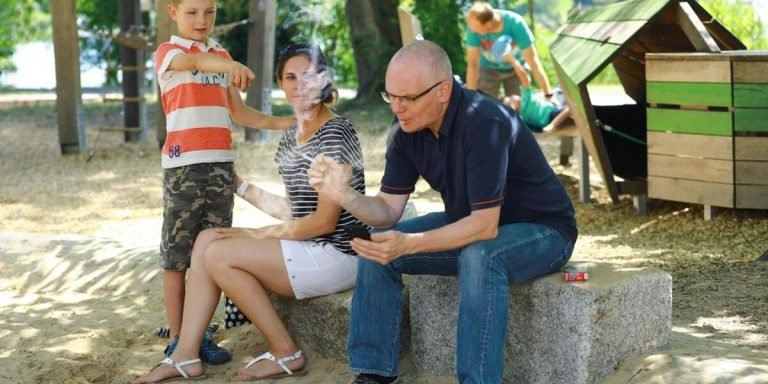Piaget Object Permanence: A Crucial Stage in Cognitive Development for Young Children
Understanding the concept of “Piaget Object Permanence” can provide a significant insight into the cognitive development process in young children. Developed by Swiss psychologist Jean Piaget, object permanence is an essential part of children’s early growth and mental expansion.
This stage refers to a child’s realization that objects continue to exist even when they cannot be observed or heard – and it plays a crucial role in developing logical thinking skills. With this understanding comes increased curiosity, problem-solving abilities, memory improvement leading towards robust intellectual nourishment necessary for their future learning endeavours.
Did you know?
Contrary to commonly held beliefs, Jean Piaget’s theory on object permanence reveals that infants as young as 5 months old have a burgeoning understanding of this concept, well before they reach the typically cited age benchmark of 8-12 months.
Understanding Piaget’s Object Permanence Theory in Special Education
Grasping the intricacies of Piaget’s Object Permanence Theory is pivotal in special education, particularly when integrating technology as a teaching tool. This theory expounds on an infant’s cognitive development stage wherein they understand that objects continue to exist even if they cannot see them. Therefore, appreciating this concept can vastly improve how we design and utilize technological tools for learning purposes.
Incorporating cutting-edge tech solutions in special education enhances students’ engagement levels while promoting understanding across various subjects. For instance, Virtual Reality (VR) simulations or Augmented Reality (AR) apps can provide visual representations of certain concepts adhering to Piaget’s premise such as spatial relation exercises which may help those with perceptual-motor deficits experience ‘hidden’ objects virtually; thus enforcing the object permanence principle.
Moreover, adaptive software applications are gaining popularity due to their personalized approach towards each student’s unique needs making it easier for educators to apply key tenets from established theories like object permanence into practical use seamlessly . The algorithm-driven nature of these programs inherently incorporates principles such as repetition and predictability – core components intrinsic within Piagetian frameworks thriving under modern-day pedagogical practice: Special Education Resources & Support.
The Role of Object Permanence in Cognitive Development
The role of object permanence, a concept presented by renowned Swiss psychologist Jean Piaget, is crucial in cognitive development. It’s the child’s understanding that objects continue to exist even when they can’t be seen or heard. This fundamental viewpoint shapes how children interact with their surroundings and plays an essential part in special education.
Special educators often leverage this key foundation from Piaget’s theory for effective teaching strategies tailored towards students with learning disabilities or those needing extra support due to other difficulties. Using tangible resources like toys, props, and interactive games help instil the idea of object permanence into the minds of these young pupils more effectively.
We live in 2023 where technology has seamlessly integrated itself into every facet our lives; it would be unwise not to utilize technological tools that uphold everyday lessons about “Piaget Object Permanence” across various activities online and offline.
There are numerous applications available today that simulate real-world experiences for learners having trouble grasping certain concepts – including object permanence. These virtual platforms provide opportunities for repetition which allows further internalization as physical interaction may sometimes limit such scope.
For instance: Interactive story-based apps designed around recurring characters disappearing & reappearing at different points throughout a course build over time on reinforcing ‘out-of-sight’ but ‘still existing,’ eventually providing them firm groundings through playful interactions.
Continued engagement using tech-driven methods enhances retention rates among youngsters who need specialized instruction owing to unique strengths plus challenges significantly way beyond what traditional educational materials offer solely.
Adapting Teaching Strategies for Students with Learning Disabilities
Incorporating elements from Piaget’s object permanence theory into special education can open new windows of understanding for children with learning disabilities. As educators and parents, it is essential to adapt our teaching strategies accordingly.
Firstly, understand that “piaget object permanence” refers to a development stage where a child comprehends that objects continue to exist even when they cannot be seen or touched. This insight becomes pivotal in helping students comprehend abstract concepts later on in their educational journey.
One strategy involves integrating technology into the curriculum. In this digital age of 2023, several apps and tools can assist learners with comparative visualization and symbolic representation related to piaget object permanence principles mathematically, scientifically or linguistically depending upon the subject matter at hand.
Another approach would be implementing practical activities that depict these concepts vividly like hide-and-seek games using everyday classroom items so as not only cognitive but also physical involvement stands capitalized here thus leading towards better comprehension rates amongst those diagnosed with attention-deficit/hyperactivity disorder (ADHD).
Teaching methods must consider differential aspects too – whether it’s auditory processing-associated difficulty or autism spectrum disorders (ASDs). For instance, providing hands-on tactile experiences instead of relying solely on verbal instructions could certainly make lessons more accessible for these children promoting inclusivity substantially within classrooms across borders everywhere globally now while we’re witnessing such unprecedented advancements happening right around us judiciously catered by 2023’s incredibly progressive world!
Implementing Piaget’s Stages of Development to Enhance Educational Resources
The incorporation of Piaget’s Stages of Development, particularly the concept of object permanence can significantly improve current educational resources. The Swiss psychologist Jean Piaget, renowned for his work on children’s cognitive development, introduced this theory to understand how young minds perceive constancy in their environment. For educators and parents dealing with the digital-native generation in 2023, incorporating these concepts into technology-aided learning methods could bring about substantial changes.
In today’s technologically advanced classroom setting, understanding a child’s mental processes gives teachers an edge while devising personalized lesson plans. Utilizing state-of-the-art virtual reality tools powered by AI algorithms that are designed based on Piagetian stages will ensure more engaging lessons catered to individual learning styles and abilities.
On another front is special education where distinctive instructional strategies form the basis for learners with unique requirements. The use of software developed considering piaget object permanence principles within interactive games or applications fosters better comprehension among students facing developmental challenges—proving pivotal in making inclusionary education a tangible possibility.
Utilizing Sensory Activities to Reinforce Concept Formation
Understanding the impact of Piaget’s stages of cognitive development is instrumental in shaping effective educational strategies. Integrating technology and sensory activities can greatly reinforce concept formation, particularly within special education resources.
In one of Piaget’s pivotal concepts known as “object permanence,” children learn that an object still exists even if it is not directly visible or tangible to them. Incorporating technology into lessons revolving around ‘piaget object permanence’ provides a unique platform for students to conceptualize this theory more readily.
For instance, virtual reality (VR) experiences are great ways tech can be leveraged to provide sensory stimulation while teaching profound theories like ‘piaget object permanence’. By immersing students in VR scenarios where objects disappear and reappear at different intervals, educators give learners an engaging way to practically understand these fundamental principles about our physical world.
Moreover, incorporating multi-sensory applications on tablets captures student’s interest quite effectively. These apps enable young learners with diverse abilities explore various textures, sights and sounds thus enhancing their sense perception skills while integrating important learning concepts such as ‘piaget object permanence’.
Creating Inclusive Classroom Environments Aligned with Developmental Milestones
Educational theories such as Jean Piaget’s Stages of Development have proven to be highly beneficial when integrated into the classroom, especially in relation to special education resources and support. Children at different stages of development engage with learning materials differently, thus understanding this can shape a more inclusive educational environment.
One important concept within Piaget’s theory is “Piaget object permanence”. This refers to children starting from an early age realizing that objects continue to exist even if they cannot see or touch them. Accordingly, integrating technology like interactive screens and augmented reality may potentially help students understand abstract concepts better by presenting invisible ideas visually.
Creating a classroom setting that complies with these milestones while maintaining inclusivity involves several notable steps:
Thirdly comes the role of technological integration – it assists teachers tremendously in offering personalized learning experiences tailored according specific learner needs.This might involve using multimedia displays during lectures or providing access research databases so learners can explore topics independently improving both comprehension depth breadth simultaneously .
Evaluating Support Tools for Children Grasping Object Permanence
Emerging technology has proven to be a game-changer in assisting children as they delve into understanding core principles like Piaget’s concept of object permanence. Object permanence, the significant milestone achieved by children within their first two years where they realize objects continue to exist even when not observed visually is fundamental for cognitive development.
Moreover, virtual reality (VR) simulations have been emerging at the forefront of these technological advancements aimed at childhood education. In correlation with Piaget’s theory of object permanence, VR offers realistic 3D environments allowing toddlers experimental interactions fostering their sense-of-self along with spatial cognition abilities -a key element towards comprehension and navigation amid ever-changing settings.
Assessing the Effectiveness of Visual Aids and Hands-On Materials
Understanding “piaget object permanence” is a critical milestone in a child’s cognitive development. It’s the concept that when an object or person disappears from sight, it still continues to exist. This seemingly simple understanding plays a significant role in your young one’s mental growth and perception of the world.
When teaching children about Piaget’s theory of Object Permanence, educators often employ various tools such as visual aids and hands-on materials. However, it is essential to assess these support tools’ effectiveness for meaningful learning experiences.
Visual aids are incredibly influential resources that cater to learners who retain information best through images or graphics – which includes most kids! These include flashcards, diagrams, videos – all tailored towards introducing new concepts like ‘Piaget Object Permanence’. In 2023 technology integration allows us even more opportunities with interactive screens bringing illustrations alive!
measuring their impact requires monitoring how effectively they hold children’s attention while also clarifying complex ideas.
Questions we can ask might be: Do visuals help simplify abstract theories? Does engagement increase during lessons using visual prompts?
Integrating Technology-Assisted Learning for Individualized Education Plans
Understanding the importance of technology in our daily lives, it becomes imperative to incorporate tech-assisted learning into individualized education plans (IEPs). IEPs are customized teaching methodologies designed for children who need specialized attention.
Kids grappling with concepts like Piaget’s object permanence can immensely benefit from these. Object permanence is a developmental milestone where kids understand that objects continue to exist even when they cannot be seen or heard. It forms the foundation of cognitive development.
- Implement Augmented Reality (AR) for enhanced learning experiences.
- Utilize Virtual Reality (VR) to create immersive environments for skill practice.
- Adopt adaptive learning software programs for personalized education paths.
1. **Augmented Reality (AR):** AR apps create an engaging virtual environment filled with 3D models which helps young learners visualize complex topics making abstract ideas more concrete, thereby aiding understanding.
2. **Virtual Reality(VR):** VR gives students real-world experiences without leaving their classrooms providing them with a safe space to explore, interact and learn about various concepts including object permanence through play-based activities.
Conclusion
In wrapping up, Piaget Object Permanence is indeed a pivotal chapter in the cognitive evolution of every little child. Understanding and appropriately responding to this stage not only aids parents and educators in molding young minds but also opens doors for children’s exploration into higher-level thinking skills.
Don’t stop here! Our website abounds with valuable insights on childhood education – guiding both parents and educators through each development phase. Discover more strategies, tools, or support networks designed specifically for your journey as an influencer shaping tomorrow’s leaders.
Happy browsing!







